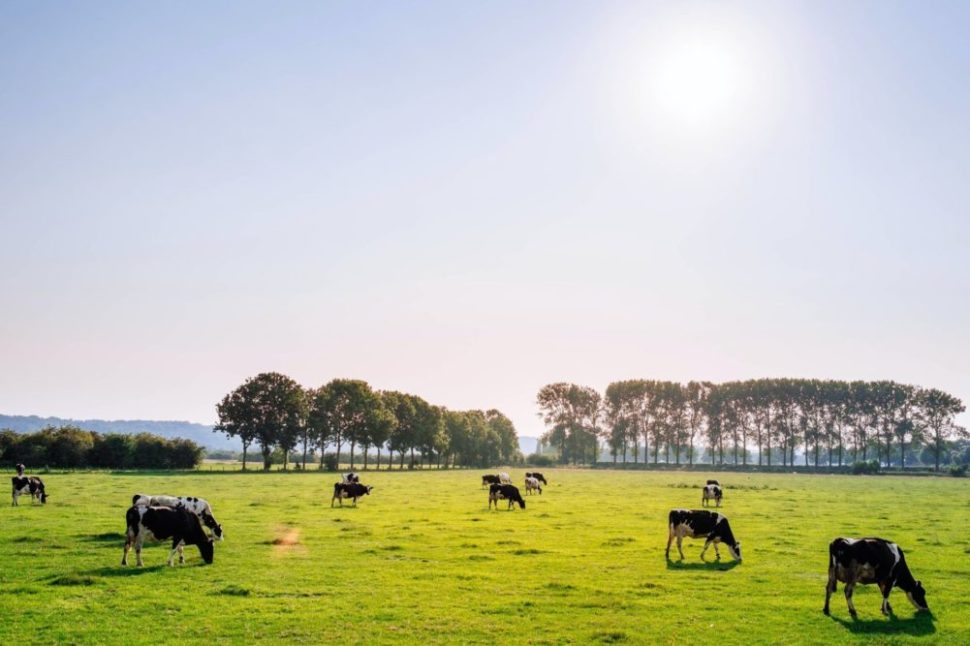There’s no shortage of tech tools to help farmers with everything from monitoring crop and pasture health to inventorying products and predicting the weather. But using those tools is all predicated on one very important thing: internet connectivity.
That’s why Microsoft and Land O’Lakes are teaming up to bring the rural US online.
“Broadband is a real problem. Eighteen to 40 million Americans don’t have connectivity. It’s difficult to get data from the middle of the farm,” Land O’Lakes chief technology officer Teddy Bekele tells AFN.
The dairy cooperative recently announced a new multiyear partnership with Seattle-based tech giant to create new agrifoodtech innovations around supply chain logistics, sustainability, and connectivity.
With 150 million acres of productive cropland in its network, Land O’Lakes — based in Minneapolis-St Paul — already boasts a portfolio of farm-focused tech solutions like the WinField United R7 Suite, Data Silo, and Truterra Insights Engine. It’s hoping that Microsoft can bring some tech expertise to the table to help its dairy farmers overcome a variety of challenges on top of the lack of connectivity many face.
Microsoft is no stranger to the farming world. Its Azure Farmbeats marketplace allows users to aggregate different agricultural datasets. Users can build AI or machine learning models using this data while tracing things like farm health, soil moisture, and more.
“We are building a lot of cutting-edge tech, cloud, and AI-based projects like Azure FarmBeat,” Ranveer Chandra, chief scientist of Microsoft Azure Global and partner researcher at Microsoft Research, tells AFN.
“But when we think about making an impact in the food and agriculture industry we need to work with a company like Land O’Lakes, which uses a lot of data and works with a lot of growers. This is why we are so excited about the project.”
Specific goals for the partnership include advancing the ability to aggregate multiple data sets through the Data Silo offering, and creating a Digital Dairy solution using edge computing to help farmers manage weather data, feed management, and animal health while improving traceability.
Both companies have already been working to crack the connectivity challenge. Microsoft’s Airband Initiative has worked around the country to eliminate the rural broadband gap, and Land O’Lakes’ American Connection Project aims to close the digital one. But the duo sees partnerships as critical to move the agrifoodtech needle forward.
“It is very hard to develop one solution that does everything, especially if you want a good one. This is the question I struggle with: we cannot address everything. You have to partner with companies, you need a tech company really focused on the tech and developing a base platform. The rest of us can build on that,” Bekele says.
“We don’t have that in agriculture today. We have a bunch of point solutions. We are trying to create an ecosystem built on a platform so they all talk to each other.”
The connectivity issue is a prime example. Land O’Lakes found itself developing multiple solutions to work around the lack of connectivity, instead of spending time and money on creating a single, better solution, he says. Although the co-op has embraced innovation in recent years, it’s still not a tech company at heart.
“Ag brings out the hardest tech challenges. When there is no connectivity to the cloud, you have to use technology like edge computing where you bring the cloud to the farm,” Chandra explains. “Then you need to use AI to fill in the gaps with the limited data you can get to still make intelligent predictions. We are excited to start blending that tech with all the useful data that Land O’Lakes growers have.”
To begin tackling connectivity together, the partners are launching pilots in rural communities that combine Microsoft’s Airband program with specific locations in the Land O’Lakes network. On top of connecting digital tools for the farm, they’re including telehealth, education, and digital skill-building resources.
They also plan to engage in advocacy work at the federal level to continue to raise awareness to support connectivity in rural areas of the US.
A long term goal is to create a carbon credit market for Land O’Lakes growers, too. As the duo develops tools, they will keep an eye towards functions like carbon accounting and the ability to predict the carbon benefits of various practices like no-till, precision nutrient management, and cover crops.
In January, Microsoft committed to becoming carbon negative by 2030. The firm is hoping that s future carbon market can help it reach its goal.
“If we create a carbon market and have good conservation records, farmers will be happy to adopt different practices, and then you will have other companies not related to agriculture purchasing credits from farmers,” says Chandra. “It creates a nice cycle that opens new doors.”




